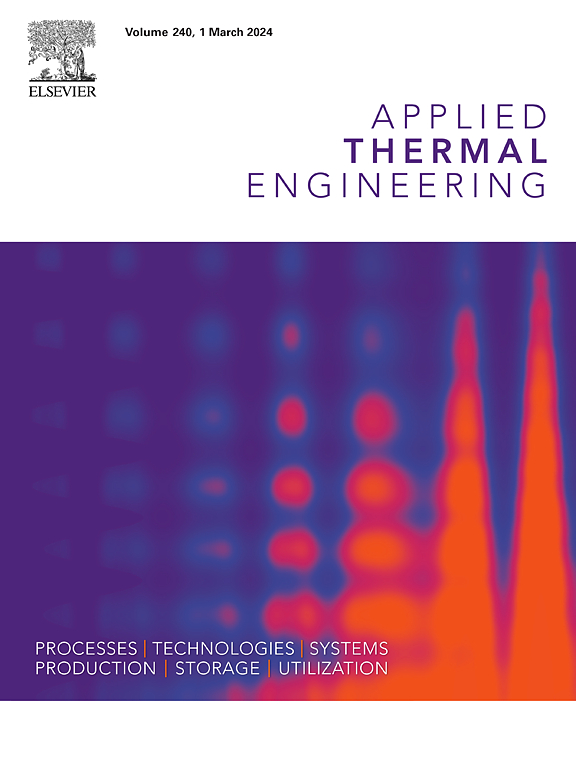毫升级油量对着火温度和热表面诱发火灾行为的影响
IF 6.1
2区 工程技术
Q2 ENERGY & FUELS
引用次数: 0
摘要
热表面是化学加工工业中常见的点火源,会引燃泄漏的易燃液体燃料,造成财产损失和人员伤亡。在真实火灾场景中,可燃液体的泄漏量通常是随机的。而以往的研究主要集中在可燃液体的最低着火温度,这些研究的泄漏量相对较小。为了探讨毫升级泄漏量(3 ~ 9 mL)对热表面诱导的变压器油着火燃烧特性的影响,对变压器油进行了火灾实验,对着火概率、着火延迟时间、火灾热辐射等关键参数进行了测量和分析。通过油量为3 ~ 9 mL的热表面实验,发现变压器油泄漏到热表面可分为不着火、长时间加热后着火和泄漏阶段着火三种反应条件。变压器油着火概率随温度呈n型曲线变化,采用单峰表达式对传统的着火概率预测模型进行了修正。最低点火温度与油量之间存在明显的负相关关系。长时间加热后的点火延迟时间随着液体燃料体积的增加而增加,泄漏阶段的点火延迟时间受液体燃料体积的影响有限。此外,还发现油量的增加会导致火焰溢出的发生。随着泄漏油体积的增大,最大辐射热通量随表面温度呈指数增长。研究结果为液体燃料泄漏火灾风险评估提供了重要的理论支持。本文章由计算机程序翻译,如有差异,请以英文原文为准。
The influence of milliliter-scale oil volume on ignition temperature and fire behavior induced by hot surface
As the common ignition source in the chemical processing industry, hot surfaces could ignite leaking flammable liquid fuels, further causing property damage and casualties. In real fire scenarios, the leakage volume of flammable liquid is typically random. While previous studies have primarily focused on the minimum ignition temperature of flammable liquids, the leakage volume in these studies is relatively small. In order to explore the influence of milliliter-scale leakage volumes (3–9 mL) on the ignition and burning characteristics induced by hot surface, the fire experiment was carried out for transformer oil, where some key parameters were measured and analyzed, including ignition probability, ignition delay time, and fire thermal radiation. Based on hot surface experiments with oil volumes ranging from 3 to 9 mL, it was found that three reaction conditions can be classified for the transformer oil leaking onto hot surfaces, including non-ignition, ignition after long time heating and ignition during the leakage stage. The ignition probability of transformer oil varies with temperature following N-shaped curve, and then traditional prediction model of ignition probability was modified by the single-peak expression. There is a clear negative correlation between the minimum ignition temperature and the volume of oil. The ignition delay time increased as the liquid fuel volume increased for the ignition after long time heating, and the liquid fuel volume had limited influence on the ignition delay time for the ignition during the leakage stage. Furthermore, it was found that the increase in oil volume would contribute to the occurrence of flame overflow. As the volume of leaking oil increases, the maximum radiative heat flux increase exponentially with the surface temperature. The research results provide crucial theoretical support for risk assessment of liquid fuel leakage fire hazards.
求助全文
通过发布文献求助,成功后即可免费获取论文全文。
去求助
来源期刊

Applied Thermal Engineering
工程技术-工程:机械
CiteScore
11.30
自引率
15.60%
发文量
1474
审稿时长
57 days
期刊介绍:
Applied Thermal Engineering disseminates novel research related to the design, development and demonstration of components, devices, equipment, technologies and systems involving thermal processes for the production, storage, utilization and conservation of energy, with a focus on engineering application.
The journal publishes high-quality and high-impact Original Research Articles, Review Articles, Short Communications and Letters to the Editor on cutting-edge innovations in research, and recent advances or issues of interest to the thermal engineering community.
 求助内容:
求助内容: 应助结果提醒方式:
应助结果提醒方式:


